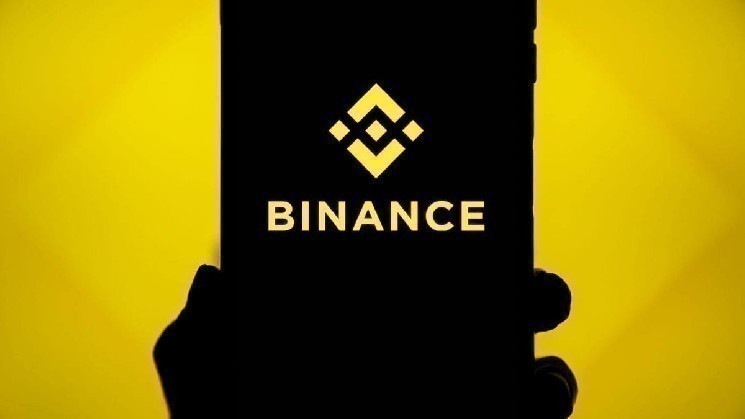Author: Lao Wang from Lianwai
In the blockchain world, even those paths that seem theoretically impeccable, logically consistent, and directional are often fraught with difficulty, as if shackled by invisible shackles. Far from being a smooth path to success, these "corrections" themselves have become heavy shackles, locking countless ambitious explorers in their tracks.
This isn't a failure of logic, but rather the harsh friction of ideals colliding with the harshness of reality. Every correct direction carries a heavy chain.
1. RWA: Shackled by “Real-World Compliance”
Putting real-world assets (RWA) on the blockchain is undoubtedly one of the most "correct" narratives in the industry. It promises to transform tangible assets like equity, debt, real estate, and even infrastructure revenue into on-chain tokens, thereby embracing regulation and empowering real entities. This sounds like the path for blockchain to move away from speculation and return to value. Ant Digital's tokenization of charging pile revenue rights once gave people hope for significantly improved financing efficiency.
However, this vision of "real value" presents the first set of constraints. Real-world assets inherently carry the complexities of the real world. Legal ambiguity is one hindrance: Does a property certificate circulating on-chain have the same legal force in court? Regulatory uncertainty is another: When assets are transferred across borders, which country's financial regulations should be followed? Coupled with a host of issues such as a lack of secondary market liquidity, complex valuation models, and fragile off-chain asset management, RWA projects have struggled to break free from the confines of "pilot" and "conceptual" status.
These visions of "real value" must be subjected to the cold test of "compliance." You can't simply tokenize Nvidia stock and trade it on a decentralized exchange (DEX)—that's inherently illegal. A compliant RWA project must follow a complex and highly centralized process:
Licensed issuer: The issuer must be a regulated financial institution, not an anonymous group.
1:1 asset custody: To issue 10,000 tokens, 10,000 real assets must be deposited in the custody account and subject to audit.
Compliant exchange trading: Tokenized securities can only be traded on exchanges that hold specific licenses, rather than the familiar Binance or Coinbase.
Strict KYC/AML: Investors need to pass stricter identity and anti-money laundering checks than regular exchanges.
The pursuit of "truth" is entangled by the complexity of "reality." This "correctness" ultimately leads to a contradictory product: a "decentralized" asset that is highly dependent on centralized institutions. Consequently, the vast majority of RWA projects remain at the pilot stage, often covered in media reports. Ultimately, they become the stars of research reports, but struggle to make a mark in actual financial reports.
2. Security and Compliance: The Shackles of Trust
In the blockchain space, rife with hacker attacks and regulatory scrutiny, security and compliance are undeniably essential. From smart contract auditing to on-chain anti-money laundering (AML), each niche sector represents a market worth tens or even hundreds of millions of dollars. Many technical teams have indeed created world-class products: code scanners that generate vulnerability lists in minutes, analytical tools that precisely track the flow of illicit funds.
But it's precisely this "rigid need" that creates the second shackle, as it faces a nearly impenetrable market. When financial institutions purchase security tools, technological advancement often takes last place, prioritizing endorsements and trust. This creates an invisible barrier: Has your company received a recommendation from regulators? Do you have partnerships with the Big Four auditing firms or major IT service providers? Do you have a successful track record serving major state-owned banks?
For a startup, the answer to these questions is almost always no. This leads to the most absurd scenario: a top-tier team, consistently winning security competitions, encounters obstacles in business development, ultimately relying on writing research reports and running training sessions to stay afloat. This "most essential" need is blocked by the impenetrable "relationship barriers" of traditional finance, becoming synonymous with "seemingly reliable, but ultimately hopeless."
3. Industrial Application: Do we have to wear this shackle called "upgrade"?
The logic behind applying blockchain to carbon trading, cross-border e-commerce traceability, and medical data sharing is equally impeccable—leveraging its decentralized and tamper-proof properties to resolve trust challenges and thereby reduce costs and increase efficiency. This is an incredibly ambitious and compelling industry story.
However, the most basic principle of the business world: cost-effectiveness, constitutes a third shackle. When a cross-border e-commerce business owner was asked whether he was willing to adopt blockchain traceability, his primary concern was: "That's great, but why should I pay more for a 'more trusted' label? I can do it with traditional databases, and much cheaper." Similarly, a carbon asset platform built on government subsidies quickly fell into disuse once the subsidies ceased. Grand plans for medical data sharing have also been stalled by hospitals' reluctance to open up their core data.
When blockchain fails to prove itself as the only "irreplaceable" and "more cost-effective" solution, the promise of "cost reduction and efficiency improvement" becomes empty talk. Ultimately, a grand application that was supposed to empower a trillion-dollar industry has become nothing more than a "futuristic-looking" showcase project in a government exhibition hall.
4. Digital Identity and Judicial Evidence: Shackled by a "Grand Vision"
From digital identity and data ownership confirmation to judicial evidence storage and government transparency, these trends undoubtedly represent future trends and have undeniable social value. They promise a more transparent, trustworthy, and efficient digital society.
However, this "grand social value" is precisely the fourth shackle, as it often contradicts market-based business logic. Digital identity requires the collaboration of the entire ecosystem, including the participation of governments, industry leaders, and regulatory agencies. This is not something a single startup can drive. One team spent two years exploring "blockchaining educational information," only to receive the school's response: "A database is enough; blockchain is unnecessary." While judicial evidence storage can be implemented, it's primarily a one-off project, earning meager service fees and lacking growth potential.
These directions are more like public infrastructure—everyone acknowledges their importance, but no one is willing to pay for them on a sustained basis. When the "correctness" of a direction relies on government subsidies or pilot projects, it inherently loses a leg. This grand vision, lacking an independent commercial backend, is locked in policy documents and PowerPoint presentations at industry conferences.
5. Decentralized Governance (DAO): Shackled by Human Nature
DAOs represent the "right" future of community ownership and decentralized decision-making. Once a project launches and becomes decentralized, the team no longer has 100% control, necessitating a mechanism for shared decision-making with the community. However, this ideal, while most aligned with the spirit of Web3, is burdened by the heavy constraints of human nature. The OpenGov model is theoretically flawless: it aligns community interests with those of whale(large investors), incentivizing them to vote for the long-term development of the ecosystem.
However, the reality is that government funds are being used for bizarre projects like paying influencers with few followers and painting private jets with logos, while truly valuable developer proposals are repeatedly rejected. A theoretically perfect incentive mechanism is defeated in reality by genuine cultural barriers, the formation of interest groups, and the shortsightedness of decision-makers. The most "correct" governance model is ultimately shackled by the oldest human weaknesses.
Where is the way to break the shackles?
Looking back at these tracks, we find that failure is not due to the wrong direction, but because every "correct" direction is connected to a heavy shackle of the real world.
But this isn't the end. Just like the Chinese internet of two decades ago, which was once considered a bubble, it experienced countless "correct" but failed attempts before ultimately developing super applications like e-commerce, payments, and social networking. Blockchain may also have to go through a similarly long cycle.
The real breakthrough may not lie in envisioning the next grand and correct narrative, but in finding the tiny fulcrum that can pry open the shackles. We are looking for teams that can use blockchain to truly reduce costs by 1% in cross-border payments, solve the trust issues faced by small and medium-sized enterprises in supply chain finance, and provide an irreplaceable tool for data compliance.
These roads seem extremely difficult now, but as long as someone can be the first to break free from the shackles, it will not only be a victory for a project, but also remove a heavy burden for the future of the entire industry.







